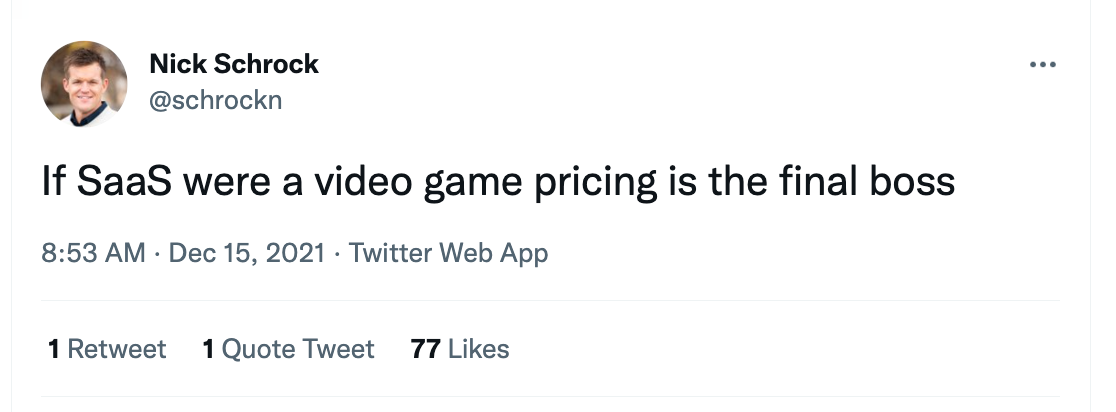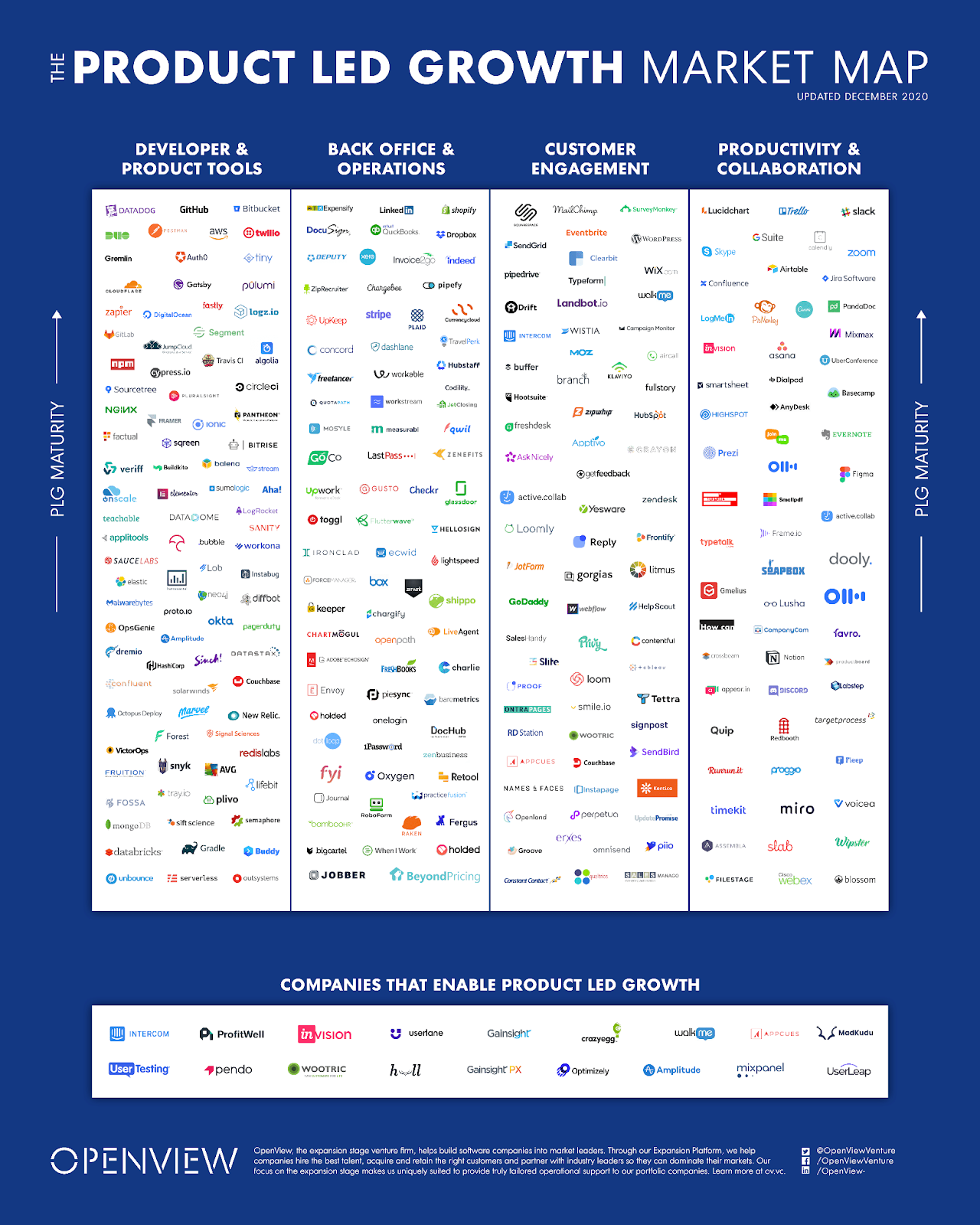[This post originally ran on Venture Inside]
Product, Placement, Promotion, and Pricing: The 4 P’s of the marketing mix taught in every business school across the world for decades to make sure you have an appealing, well-priced, competitive offering for your target user. In theory, pricing is as simple as forecasting the demand curve of your product and understanding the elasticity: how much does demand move when I change the price? Easy! Just look at the slope of this beautifully modeled curve and you can figure out if the proposed change is good or bad with precision! If only it were so easy.

In my experience working with founders, pricing is the one topic that consistently drives insecurity, imposter syndrome, and advice fatigue. My business school friends who have gone on to become “pricing experts” working at big FAANG companies are in hot demand by every early-stage founder we back. And yet, it is one of the areas that should be testable. It’s an area where an opinionated data model and easy integration model for developers should exist so plans can evolve, paywalls can be added and changed, add-ons can be configured, trials can be managed, and all can be tested and iterated on over time.
So why has it taken so long? Why now? The answer is part of the broad movement from a top down to bottom up sales model. With top down sales models, sales leads wine and dine VPs and haggle over the price. The final number is important of course, and there are general parameters, but the price paid and the services delivered are two separate components. Each sales rep has some wiggle room in the price they can charge. But in today’s world of a bottom up motion and freemium solutions, the price and services delivered are linked. You don’t haggle over a 7 day free trial, or 10GB more of free storage; you decide to either pay up, or go somewhere else. So if you’re in the business of monetizing software, you have to get this right.
But anyone who has made pricing decisions realizes this is insanely hard, and precisely modeling a demand curve is a pipe dream. Even selling as simple as a single SKU, like lemonade sold from a sidewalk stand, you quickly realize that demand changes depending on the time of day, day of week, weather, demographics, etc. Pricing right is tough. And the single SKU, physical product doesn’t begin to capture the complexity when you price software.
Software products are not like physical products or services. They change constantly. They evolve. They grow up. They expand. They divide. A product you sold to a customer yesterday could be a different product than they get today, and yet, we still think about software pricing and packaging like we’re selling a t-shirt or a Tesla. In an era when “build, test, iterate, learn” has become universally accepted, software monetization is stuck somewhere in a PowerPoint slide.

Complicating matters further are all of the orgs and stakeholders that a pricing or packaging change affects. The GTM team does an analysis and wants to tweak packaging, engineering touches code, product prioritizes the backlog, design mocks something up, and executive level sign off is required because it has direct revenue implications. With this time intensive and cross functional effort, it’s safe to assume that 1) teams aren’t tweaking pricing as packaging as often as they would like and 2) barring some miracle of God you aren’t fully optimizing your monetization.
Enter Stage. At its simplest, Stage helps software companies make more money from more people. But they do this by providing a set of APIs to manipulate pricing and packaging without the engineer and data dependencies commonplace today. Imagine you have just launched a free version of your product and you want to set up a features, time, or volume-based paywall. Through Stage’s API and no-code tooling, you set up a test so half of free users hit a paywall based after a trial period, and the other half hit a paywall after the volume threshold is hit. You measure and analyze conversion and revenue potential from each test, and move forward with the time based paywall. As new features are added and new products launched, you test and adapt pricing models again. Stage scales with your businesses as product and feature complexity grows, keeping pricing and packaging optimization decisions as simple as possible. Stage helps you build confidence in monetization and growth.
This fits perfectly with our consumerized enterprise (CE) thesis, specifically CE enablement tools. As more and more companies start their GTM with a bottoms up motion, and legacy players launch their own, more companies will be asking themselves questions about pricing and packaging. Consumerized enterprise companies require an entirely different suite of enablement products, from CRM platforms like Endgame to interactive demos like Arcade. While there are 70 CE companies greater than $1Bn valuation, most enablement tools used by these companies are still DIY. Pricing follows the principle that any activity that many companies still primarily do in spreadsheets (Carta as my favorite example) is rife to become a software product with a better UI and opinionated data model.
It only takes looking at this OpenView Market Map to note the different number of competitors sitting in the enablement box versus the application box. This is why investing in this area and finding companies like Stage has become a top focus in CE.

On a personal level, I instantly connected with Patrick and Kaiser. This is a team that I felt immediate enthusiasm for, and rallied the firm over the weekend to come to a decision in 48 hours. Patrick and Kaiser both lived these pain points in their previous roles, taking part in the neverending task of building, measuring, and iterating on pricing and packaging. They each have experience building homegrown internal tooling on top of billing, access control, feature flagging, event analytics, and business intelligence systems to “solve” this problem. If it sounds complicated, it’s because it is. It frequently breaks, and it never scales. Going through these experiences and realizing the extent to which teams are flying blind was the “ah-hah’’ moment that led to Stage.
If you are embarking on solving pricing and packaging for your startup, or in the trenches of it now, reach out to Patrick or Kaiser hey@heystage.com or Apply for Early Access here!


